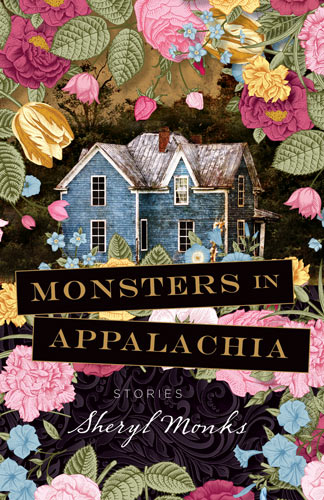Monsters in Appalachia
A mix of darkly funny and shockingly somber stories, Sheryl Monks’s Monsters in Appalachia is an outstanding short story collection. She masterfully draws readers into many lives in Appalachia through setting, characters, and, most importantly, dialogue. Some stories are fantastical, others are more traditional, and all are worth reading, either one right after another or, slowly, one at a time.
A mix of darkly funny and shockingly somber stories, Sheryl Monks’s Monsters in Appalachia is an outstanding short story collection. She masterfully draws readers into many lives in Appalachia through setting, characters, and, most importantly, dialogue. Some stories are fantastical, others are more traditional, and all are worth reading, either one right after another or, slowly, one at a time.
Sheryl Monks immerses readers into the working heart of Appalachia by leading them down to a mine in an early story, “Robbing Pillars”:
There is water standing in ruts along the crawl, which dampens the knees of their work pants. Occasionally they hear a drip, but once they travel deeper inside, the floor of the shaft becomes dry again. Visibility is only possible by the dim lights of their miners’ caps, powered by wet-cell batteries. Overhead, the 4160 hums in Maiden’s ears. The only other thing so far that has spooked him is the blasting. When the dynamite men come in, the others hunker down where they are and protect themselves as best they can. The only real thing between them and fire in the hole is prayer. Not even the unbelievers chance it. “Faith can move mountains,” the miners say. “Just pray like hell it don’t have to.’”
Although some of the mine jargon may be unfamiliar, Monks describes the underground world clearly so that readers understand the dangers of the mines and the accidents that lie waiting to happen. This sense of danger looms over many of the stories, inside the mines and out.
In single paragraphs, Monks breathes life, complete with histories and futures, into her characters. For example, in “Barry Gibb is the Cutest Bee Gee,” a young teenage girl describes her routines with her best friend, showing how they are growing into young women:
If we’re not playing jacks, we’re choreographing dances like those we watch on Solid Gold. I am not a natural like Kimberly, but I do take after Mama and can usually get the steps down pretty fast. With the strobe lights going, we look like we’re being struck by lightning. We are brown as Indians. Our teeth are white as stars. The rhythm of the music pulses in our temples, our hearts, and we feel our blood gushing around inside us like twin volcanoes.
The language of the characters, and oftentimes the narrators, throughout the stories rings with Appalachian dialect. The story “Clinch” begins with “It had come a sudden shower. Water gushed down the mountains in raging gullies, turning the dirt roads into creek beds that fed into the tributaries of the Tug River.” Later in the story, a child and his mother debate over a purchase at the feed-and-seed store.
“How much is it?” she asked.
“Ain’t but eighty-nine cent. I can buy it myself if they ever pay me for my bottles.”
“Eighty-nine cent seems high for a spoonful of peas and—what’s that say? Chilled Meat?”
These voices, like others in the collection, are rich and real, drawing readers deep into Appalachia.
Monsters in Appalachia is a brilliant collection of short stories, reminiscent of Flannery O’Connor’s darkness and sense of place. Sheryl Monks’s writing is strong and precise, drawing readers down the winding roads of Appalachia. Hers is a voice I eagerly await in another collection of stories or a novel.





